Evolutionary Ecology
The department of Evolutionary Ecology gathers complementary skills in behavioural ecology, population dynamics, population biology, community ecology, and methodology (statistics and modelling). The research done in the department aims at studying how animal species evolve in a changing world by understanding the causes of the evolution of traits, adaptations and interactions. For that, we consider different levels of organization from individuals to populations and communities. Because organisms cannot be considered isolated from other biotic factors, we consider pathogens but also competing species within communities.
We study how individuals adapt to their environments that are largely impacted by anthropic pressures, and how life history traits and behaviour evolve in response to these pressures. Although we mainly focus on phenotype, we more and more consider the mechanistic link between the genotype and the phenotype. We develop the theoretical framework of our discipline through a conceptual and modeling approach. In parallel, we test hypotheses that arise from theoretical predictions through experimental, comparative and observational approaches on different biological models (insects, birds, mammals). Experimental approaches are developed in the laboratory (insect model) and in natura (bird, insect and mammal models). Observational and comparative research is mainly concerned with vertebrates. Our approaches are also, and increasingly, interested in the mechanisms of adaptive responses. In addition to the classical approaches of demographic analysis and trait change, methods of ecophysiology, chemical ecology and molecular biology are used.
Our department hosts several long-term studies of wild populations of different species. These long-term studies offer a valuable way to understand how biotic and abiotic factors affect individuals’ life history traits, and the functioning of populations in natura. Five populations of mammalian species are thus monitored for several years (more than 40 years on roe deer, 30 on Alpine marmots, 25 years on cats, 16 years on zebras, and 20 years on impala). Two of our study sites (La Sassière in Vanoise National Park (Alpine marmots) and Hwange National Park) have been certified as “Site d’Etude en Ecologie Globale” (SEEG), and two (ZA “Hwange” and ZA “Antarctic and sub-Antarctic”) were certified as “Zone Atelier” by the CNRS.
The department of Evolutionary ecology is also largely involved in training activities. Lastly, we also have strong socio-economic relationships. Indeed, because we address questions of major societal interest (global warming, public health) we tightly collaborate with socio-economic partners (Office Français de la Biodiversité, Vanoise National Park, Hwange National Park in Zimbabwe, Office National des Forêts, etc.) and participate to general public and media events.
Publications
Display of 2281 to 2310 publications on 2449 in total
Effects of the feline panleukemia virus on feral cat populations on islands
Proceedings of the Royal Society B: Biological Sciences . 267 : 2049-2056
Journal article
see the publicationDensity spatial organisation and reproductive tactics in the domestic cat and other felids
incollection . -- : 119-148
Book chapter
see the publicationRole of rabies in recent demographic changes in red fox (Vulpes vulpes) populations in Europe
Mammalia . 64 : 391-410
Journal article
see the publicationMate choice in domestic cat Felis catus
Aggressive Behavior . 26 : 455-465
Journal article
see the publicationSuccessional trends in the characteristics of soil nematodes communities in cropped and fallow lands in Senegal (Sonkorong)
Applied Soil Ecology . 14 : 5-15
Journal article
see the publicationA soil microscale study to reveal the heterogeneity of Hg (II) impact on indigenous bacteria by quantification of adapted phenotypes and analysis of community DNA fingerprints
FEMS Microbiology Ecology . 31 : 107-115
Journal article
see the publicationRecherche de méthodes de gestion des peuplements de nématodes phytoparasites par les facteurs du sol en zone soudano-sahélienne au Sénégal
Étude et Gestion des Sols . 7 ( 4 ) : 261-270
Journal article
see the publicationRelationships between abiotic and biotic soil properties during fallow periods in the sudanian zone of Senegal
Applied Soil Ecology . 14 : 89-101
Journal article
see the publicationAnnual spawning migrations in modelling brown trout population dynamics inside an arborescent river network
Ecological Modelling . 133 : 15-31
Journal article
see the publicationEmergence of individual behaviour at the population level. Effects of density-dependent migration on population dynamics
Comptes rendus de l’Académie des sciences. Série III, Sciences de la vie . 323 : 119-127
Journal article
see the publicationAggregation and emergence in ecological modelling: integration of ecological levels
Ecological Modelling . 127 : 11-20
Journal article
see the publicationWeb-building behavior in an orb-weaving spider Zygiella x-notata: influence of experience
Animal Behaviour . -- : 603-611
Journal article
see the publicationBiological variability and exposure assessment
International Journal of Food Microbiology . 58 : 203-212
Journal article
see the publicationOriloc: prediction of replication boundaries in unannotated bacterial chromosomes
Bioinformatics . 16 : 560-561
Journal article
see the publicationAnalyzing DNA strand compositional asymmetry to identify candidate replication origins of Borrelia burgdorferi linear and circular plasmids
Genome Research . 10 : 1594-1604
Journal article
see the publicationClutch size manipulations in the chestnut weevil Curculio elephas: fitness of oviposition strategy
Oecologia . 122 : 493-499
Journal article
see the publicationGrowth of European roe deer: patterns and rates.
Acta Theriologica . 45 ( 1 ) : 87-94
Journal article
see the publicationFactors affecting maternal care in an income breeder, the European roe deer
Journal of Animal Ecology . 69 ( 4 ) : 672-682
Journal article
see the publicationDetection identification and correction of a bias in an epidemiological study
Journal of wildlife diseases . 36 : 71-78
Journal article
see the publicationTransmission of feline immunodeficiency virus in a population of domestic cats (Felis catus).
Wildlife Research . 27 : 603-611
Journal article
see the publicationSystème d`appariement et succès de reproduction chez le chat domestique (Felis catus L.) Conséquence sur la distribution de la varabilité génétique.
incollection . -- : 369-375
Journal article
see the publicationThe genetics of Phenotypic plasticity. IX. Genetic architecture and sex differences in Drosophila melanogaster
Evolution - International Journal of Organic Evolution . 54 : 1035-1040
Journal article
see the publicationDevelopmental constraints on an adaptive plasticity: reaction norms of body pigmentation in adult segments of Drosophila melanogaster
Evolution and Development . 2 : 249-260
Journal article
see the publicationArtificial intelligence and meaning--some philosophical aspects of decision-making
Acta Biotheoretica . 48 : 173-179
Journal article
see the publicationDetermination of parotid urea secretion in sheep by means of ultrasonic flow probes and a multifactorial regression analysis
Journal of Animal Science . 78 : 471-476
Journal article
see the publicationBiological variability and exposure assessment
International Journal of Food Microbiology .
Journal article
see the publicationNematode infestation and body condition in European roe deer (Capreolus capreolus)
Game and Wildlife Science . 17 ( 4 ) : 241-258
Journal article
see the publicationBet-hedging diapause strategies in stochastic environment
The American Naturalist . 155 : 724-734
Journal article
see the publicationPrevalence and pathogenicity of retroviruses in wilcats in France
Veterinary Records . 146 : 317-319
Journal article
see the publicationEchantillonnage en faune sauvage: quelques questions sur la taille d`échantillon.
Epidémiologie et Santé Animale . 37 : 11-19
Journal article
see the publication
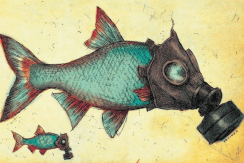
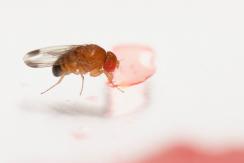
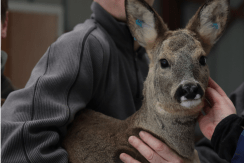
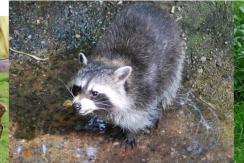
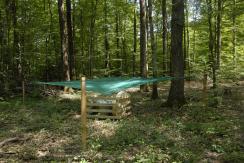
You also, comment on this article